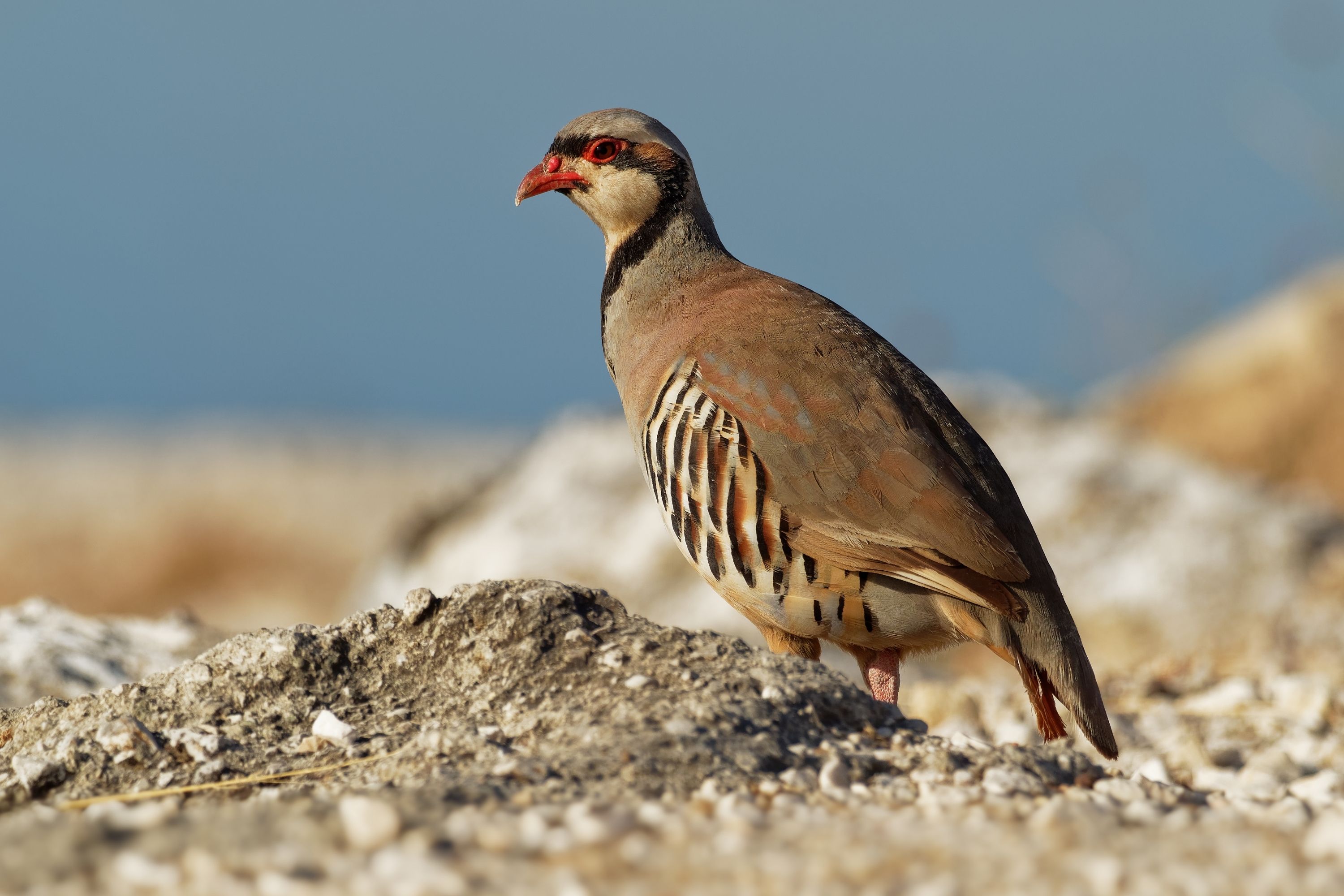Chukar
(Alectoris chukar)

Description
The chukar partridge (Alectoris chukar), or simply chukar/Chakor, is a Palearctic upland gamebird in the pheasant family Phasianidae. It has been considered to form a superspecies complex along with the rock partridge, Philby's partridge and Przevalski's partridge and treated in the past as conspecific particularly with the first. This partridge has well marked black and white bars on the flanks and a black band running from the forehead across the eye and running down the head to form a necklace that encloses a white throat. Native to Asia, the species has been introduced into many other places and feral populations have established themselves in parts of North America and New Zealand. This bird can be found in parts of the Middle East and temperate Asia. The chukar is a rotund 32–35 cm (13–14 in) long partridge, with a light brown back, grey breast, and buff belly. The shades vary across the various populations. The face is white with a black gorget. It has rufous-streaked flanks, red legs and coral red bill. Sexes are similar, the female slightly smaller in size and lacking the spur.The tail has 14 feathers, the third primary is the longest while the first is level with the fifth and sixth primaries. It is very similar to the rock partridge (Alectoris graeca) with which it has been lumped in the past but is browner on the back and has a yellowish tinge to the foreneck. The sharply defined gorget distinguishes this species from the red-legged partridge which has the black collar breaking into dark streaks near the breast. Their song is a noisy chuck-chuck-chukar-chukar from which the name is derived.The Barbary partridge (Alectoris barbara) has a reddish-brown rather than black collar with a grey throat and face with a chestnut crown. It has been introduced widely as a game bird, and feral populations have become established in the United States (Rocky Mountains, Great Basin, high desert areas of California), Canada, Chile, Argentina, New Zealand and Hawaii.Initial introductions into the US were from the nominate populations collected from Afghanistan and Nepal. It has also been introduced to New South Wales in Australia but breeding populations have not persisted and are probably extinct.A small population exists on Robben Island in South Africa since it was introduced there in 1964
Taxonomic tree:







